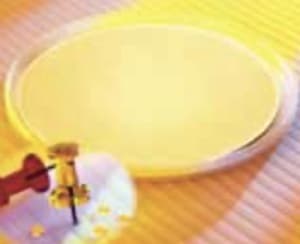Nano-optical structures are defined as a combination of nanoelectric properties (PhD in Nano-Microelectronics)
Researcher and author: Dr. ( Afshin Rashid)
Note: Nano-optical structures are defined as a combination of nanoelectric properties.
Through the right combination of materials and structures, nano-optical devices can perform any passive optical function, including polarization filter, phase lag, spectral filter, and emission management (e.g., lenses and beam splitters). Various functions can be designed for open space and wave applications. Nano-optical devices can also be designed to operate in any wavelength range. The main method can be used for UV, visible and IR wavelengths with appropriate changes in dimensions and structural materials. In addition, they can form the core of an optical system. Practical applications of nano-optics require a complete optical system consisting of nano-patterned materials and adjacent materials including optical substrates and thin film coatings.Nano-optical structures are defined as a combination of material and physical properties.
Features can be divided into three types:
Structural: pattern (e.g., linear, mesh, and circular), dimensions (e.g., period, thickness, and duty cycle), and spatial variations (e.g., multiple arrays and layers)
Materials: Nanostructured materials (such as dielectrics, metals and polymers), in-structure fillers, adjacent thin films and substrates (eg glass, plastics, dielectrics and crystalline materials)
System: The relationship of nanoparticle structures to the path of the optical beam and any excitatory materials and structures (eg, liquid crystals, solid materials, electro-optical polymers and MEMS)
Sub-wavelength structure size is key to optical and optical benefits. Nano-optical elements use microstructures that are one or more times smaller than the wavelength of the incident light - their dimensions are usually between 10 and a few hundred nanometers. In such dimensions, these structures may interact with light both on the basis of classical optics principles and in the realm of relatively small-scale local interactions. The exact application of the boundary conditions of the Maxwell equation describes the interactions of light with nanoparticle structures. For very small structures, single-electron or quantum effects may be observed. As a result, many nano-optical devices exhibit unique optical behaviors — such as high polarization differentiation in a thin micron space, color phase lag, And monolayer combinations of optical functions such as polarization and spectral filtering - either randomly or intentionally. These nano-optics offer useful alternatives to optical circuit design. Others can simply be designed as an alternative to classic bulk optics.
Conclusion :
Nano-optical structures are defined as a combination of nanoelectric properties.
Researcher and author: Dr. ( Afshin Rashid)
PhD in Nano-Microelectronics





